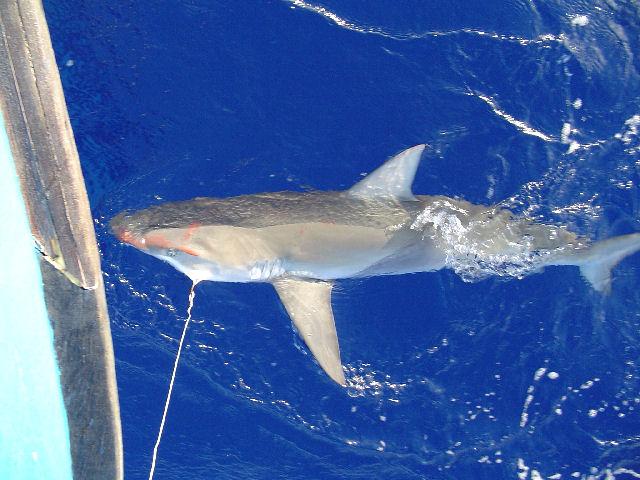While sharks might be feared by the general public, for fishermen there is no greater thrill than having the ocean’s biggest predator at the end of your line. Sometimes you catch a shark when you least expect it. Other times you go out searching for trouble.
In this article, we discuss how to catch a shark from a boat while drift fishing. Catching a shark from the beach is a whole other gamble and not one this author is interested too much in pursuing.
How to catch a shark is a lot more difficult than just throwing a line in the water with a baited hook. Here are 10 things you need to know to catch a shark successfully.
Choosing a rod
Before heading out on any fishing expedition, you must be equipped with the right gear. In the case of fishing, it all starts with the rod. When it comes to shark fishing, you want a rod that’s fairly stout, capable of handling a monster should you be so fortune. We recommend a conventional stand up rod between 5’5″ and 6’6″ that’s rated for 50 to 60 lb. monofilament line.
RELATED: Oregon Surfer Talks about Gruesome Shark Attack
50 lb. mono
While braided line is the preferred choice for most anglers these days, when it comes to catching sharks, they can be line shine, so most fisherman go with mono-filament. Start with a 50 lb. or higher mono top shot. Mono-filament also offers a lower chance of tangles than the braided line, and since this will be the fishing fight of you life, that anything could become an issue.
Drag reel
One that you’ll find after being in a few drag out fights with a shark is that ultimate control on the line tension is absolutely critical. For this reason we strongly recommend lever drag reel and even better a two-way speed reel. This will allow you the best control on the line drag and ensure the thrasher doesn’t break the line.
RELATED: Top 5 Shark Fishing Destinations in America
Live bait
As always, there is nothing that replaces the effectiveness of live bait. Many anglers swear by chunks of bait fish or partially filleted strips, but live bait hooked through the nose or just above the dorsal fin will create an appetizing presentation that shark will not be able to resist.
Use haywire
Now here’s where things get interested. Start with a 8-foot leader of 130 lb. fluorocarbon connected to the main line by a 100 lb. or greater ball bearing swivel. Now connect the end to another ball bearing swivel attached to an 8-foot strand of 200 lb. haywire tied finally to a 8/0 circle hook fastened using a haywire twist.
Choosing a spot
Like any day of fishing, the best way to find a productive fishing spot is to seek local knowledge. Speaking with the locals at the bait shop or the marina will tell you most of what you need to know. But you still need to use your basic instinct. Sharks will be where other fish are circulating, which is usually in areas of rocky bottoms or cover such as kelp. Look also for changes in terrain, places on the topographic map that reveal lines closer together. This is a place where sharks can mount an attack as long as you notice plenty of bait fish around.
Plan for a drift
Once you choose a spot, you want to think about your drift. Where will the boat end up if you turn off the engine and float. Determine a spot about 500 yards up drift where you sill start fishing and head that way at about five to six knots.
Chum the water
As you head toward your starting spot, start to chum the waters. Chumming the water with fish and guts is the ultimate key to a successful shark hunt. Chumming the waters is like ringing the dinner bell. Just be prepared to hook one up as you drift on back.
Set at right depth
A good strategy is to let out two lines, one deeper than the other. Consider placing one at a depth of about 30 feet and the other at around 50 feet. This will ensure you have the area covered. Pay attention to where your chum has ended up too, as it’s a good idea to try and get your bait nearby to capitalize on whatever it attracts. Don’t make the mistake of dropping your line too far to the bottom as sharks do most of their hunting near the surface.
Prepare for release
What to do once you catch a shark is a whole other ball game. Unfortunately that often involves cutting the wire. Do not try to remove the hook unless you have a death wish or you don’t care too much about losing a hand. Fortunately that wire will rust away in a few weeks, just be sure to snip it at least as close as you’re comfortable with getting.








